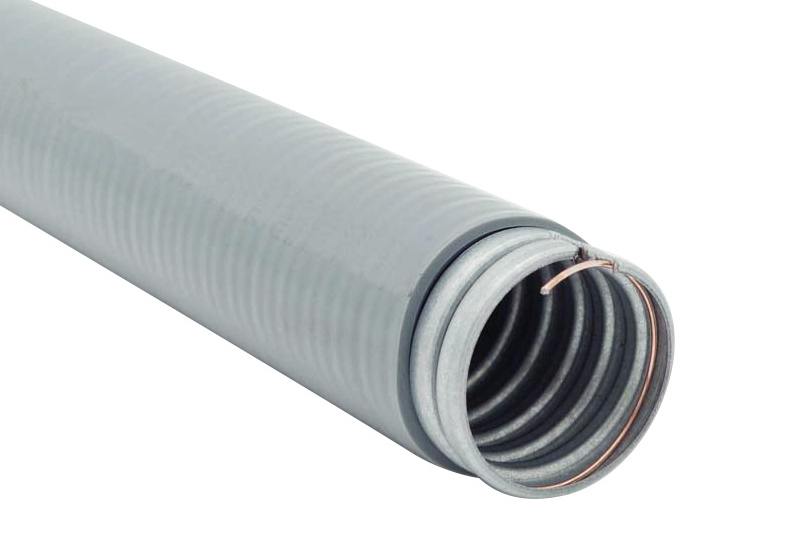Oct. 26, 2022
Introduction
Liquid tight conduit is specified as a raceway of a circular cross-section having an outer liquid-tight, nonmetallic, sunlight-resistant jacket over an internal adaptable steel sheath with linked couplings, adapters, as well as fittings for the installment of electric conductors.

Advantage
Stress Relief
A common misconception about liquid-tight conduit and fittings is that it provides strain relief for cables. While liquid-tight conduit does provide some relief, it actually provides more of a protective barrier between the cable and whatever environment it may be installed in. (Kind of like how your jacket protects you from rain and snow.) But how is this different from a liquid-tight strain relief, you may ask?
Liquid-tight Grip
Liquid-tight strain reliefs are different from liquid-tight conduits and fittings in that they provide strain relief directly to the cable. The industry standard, set by UL, is 35 pounds of pulling force. This means that a horizontal pull of 35 lbs. can be applied to the cable before the cable begins to pull out of the rope clamp or application.In applications where movement, vibration and stress on the cable is expected, liquid-sealed rope clamps may be a better choice.
Environmental Protection
Liquid-tight conduit is ideal for use in environments that may be wet or humid. Used in conjunction with liquid-tight fittings, the conduit will retain moisture. If the application requires the use of a liquid-tight accessory with the conduit, make sure the accessory is threaded at the connection or, alternatively, use a junction box. This type of conduit can also be used in applications where wires or cables may be exposed to corrosive elements. An example of such an application is the use of conduit for condensers in air conditioning units.
If installing wire or cable in an outdoor application, use a metal version of liquid-tight conduit with a PVC outer jacket and a stabilizer to provide additional protection against the elements, including the sun's UV rays. This type of conduit is also suitable for applications that require bending or where vibration is expected.
Conduits with an inner core of galvanized steel are highly resistant to both bending and vibration. The core of the conduit also has a plasticized PVC coating that provides oil resistance, as well as optimal performance in high temperature applications.
The liquid-tight conduits also provide adequate protection against dust and certain types of liquids. In addition to this, these conduits have high mechanical strength, making them the preferred choice for secure connections.
Use these conduits if your application requires that the cable be buried below ground. Even when buried underground, liquid-tight conduits provide adequate protection against moisture and crushing. However, it is critical to note that you should choose to use conduits that are no more than one inch in diameter. Why? Larger diameter conduits are not suitable for concrete encapsulation.
Are you interested in learning more about liquid tight conduits for sale and how they can benefit you? Contact us today to secure an expert consultation!

















